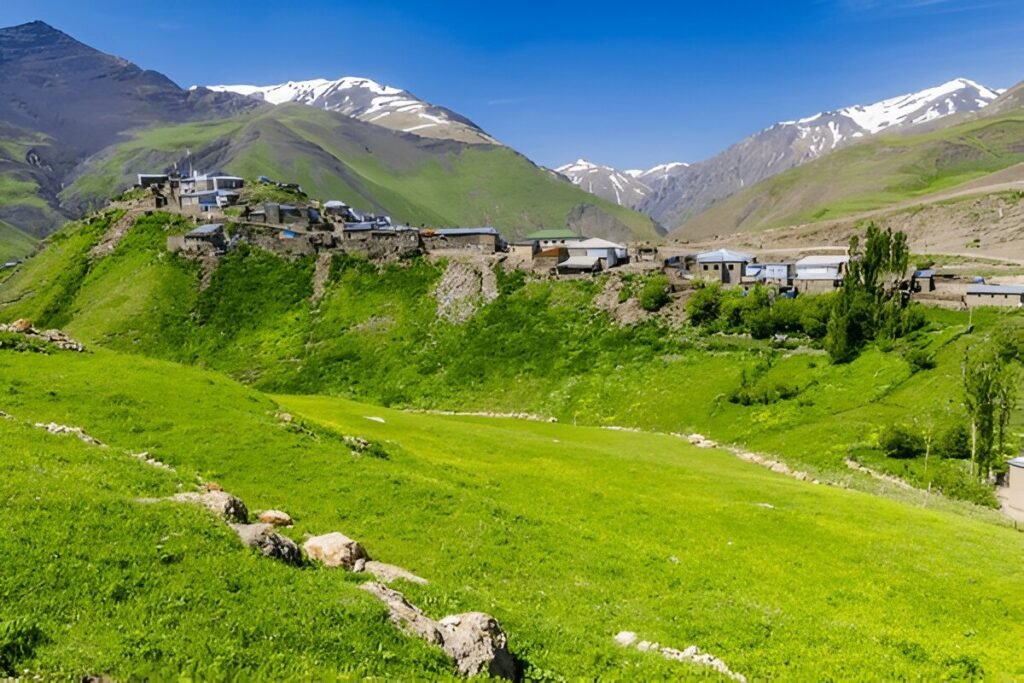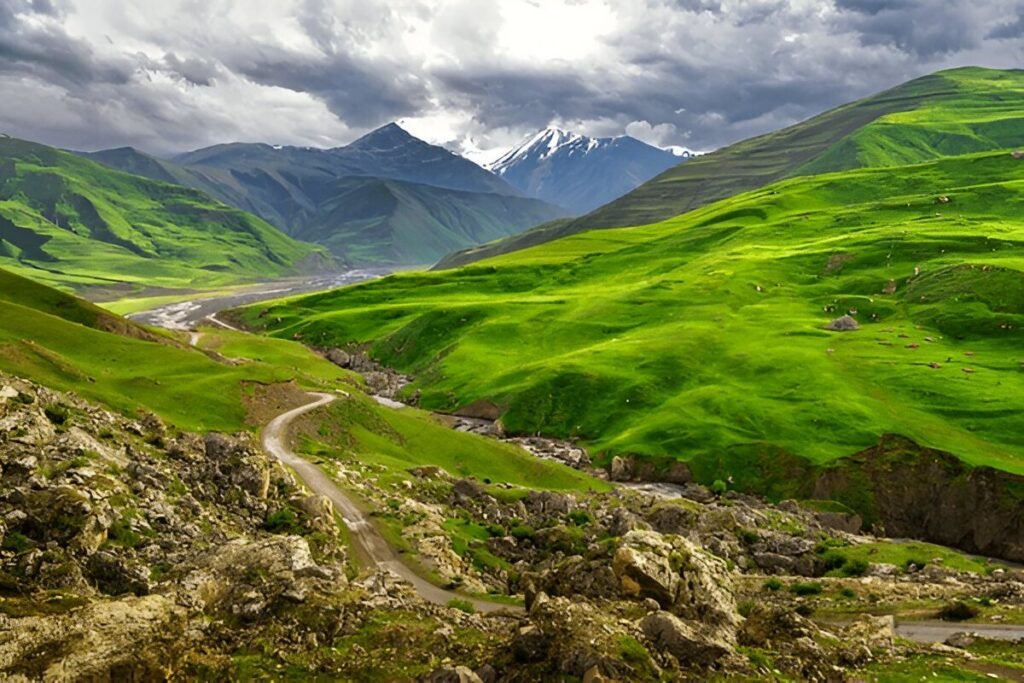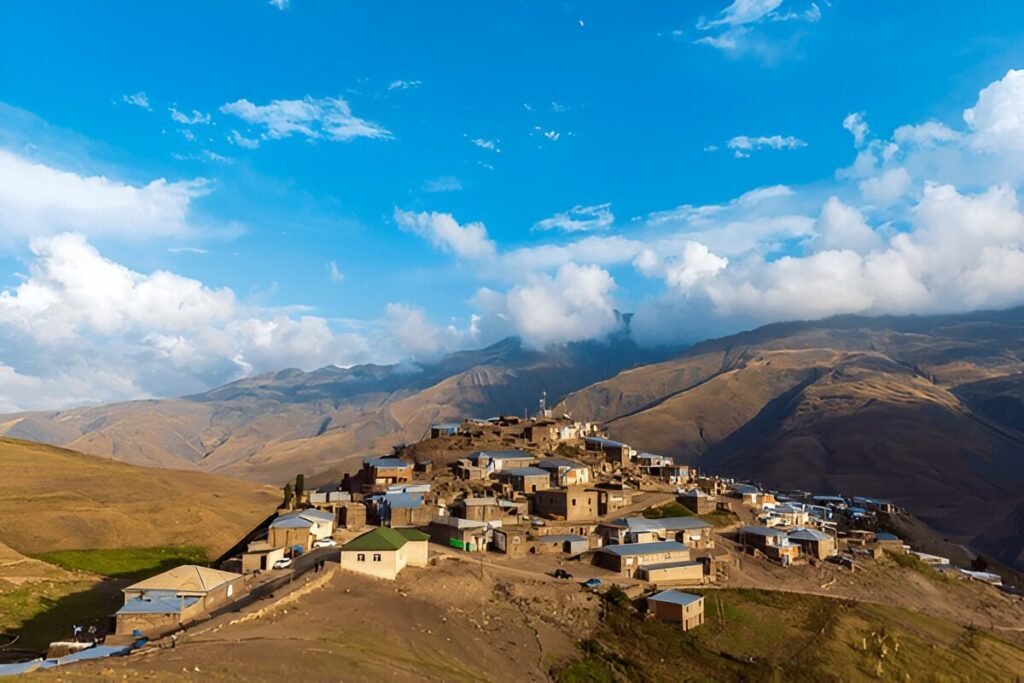Introduction
Nestled high in the Caucasus Mountains of Azerbaijan lies the ancient village of Khinalug (also spelled Xinaliq). Perched at an altitude of around 2,300 meters (7,550 feet) above sea level, Khinalug is not only one of the highest settlements in Europe but also one of the world’s oldest continuously inhabited villages, with a history that dates back over 5,000 years. This remote and breathtakingly beautiful village is renowned for its unique culture, ancient traditions, and stunning natural landscapes, making it a living museum of history and heritage.
In this blog, we will explore the remarkable features that make Khinalug a must-visit destination. From its historical significance and architectural marvels to its linguistic uniqueness and the hospitality of its people, Khinalug offers a glimpse into a bygone era where time seems to have stood still.
A Journey Through History
Khinalug’s history is as awe-inspiring as its surroundings. The village is believed to have been continuously inhabited since the Caucasian Albanian period, over five millennia ago. Its strategic location on the ancient Silk Road made it a key point of trade and cultural exchange, connecting Europe and Asia. The Khinalug people, also known as Kettid, have managed to preserve their rich heritage despite centuries of change around them.
The village has also played a role in the defense of the region due to its high-altitude location. Its isolation protected it from invasions and helped preserve its unique traditions. Today, Khinalug stands as a testament to human resilience and the ability to thrive in one of the most challenging terrains on Earth.
Breathtaking Architecture
 Khinalug’s architecture is as unique as its history. The houses are built in a terrace-like structure, with the flat roof of one home serving as the courtyard for the home above it. This ingenious design maximizes space and accommodates the steep mountain slopes. The buildings are constructed from locally sourced stone and wood, blending seamlessly with the surrounding environment.
Khinalug’s architecture is as unique as its history. The houses are built in a terrace-like structure, with the flat roof of one home serving as the courtyard for the home above it. This ingenious design maximizes space and accommodates the steep mountain slopes. The buildings are constructed from locally sourced stone and wood, blending seamlessly with the surrounding environment.
The village also boasts ancient landmarks, including mosques and sacred shrines. One of the most significant sites is the mosque dating back to the 12th century, which showcases the Islamic heritage of the region. Despite its small size, Khinalug’s architecture speaks volumes about the ingenuity and resourcefulness of its inhabitants.
A Linguistic Treasure
One of Khinalug’s most fascinating aspects is its language. The Khinalug language, known as Ketsh or Khinalugian, is a unique member of the Northeast Caucasian language family. It is considered a linguistic isolate, meaning it has no close relatives among the languages spoken in the surrounding regions. The preservation of this ancient language is a testament to the cultural resilience of the Khinalug people.
Although Azerbaijani is widely spoken in the region, the villagers take pride in their native tongue and continue to pass it down through generations. Efforts are being made to document and preserve the Khinalug language, as it is a vital part of the village’s cultural identity.
Traditions and Lifestyle
Life in Khinalug revolves around agriculture, animal husbandry, and craftsmanship. The villagers are known for their expertise in weaving carpets and making traditional woolen clothing. These skills have been passed down through generations and remain an integral part of their daily lives.
Festivals and religious rituals are also a significant aspect of Khinalug’s culture. The community celebrates both Islamic and pre-Islamic traditions, reflecting their deep connection to their heritage. Visitors are often welcomed to participate in these celebrations, providing an authentic cultural experience.
A Natural Paradise
 The landscape surrounding Khinalug is nothing short of spectacular. Towering peaks, lush green meadows, and crystal-clear streams create a picturesque setting that captivates all who visit. The area is also home to diverse flora and fauna, including endemic species that thrive in the high-altitude environment.
The landscape surrounding Khinalug is nothing short of spectacular. Towering peaks, lush green meadows, and crystal-clear streams create a picturesque setting that captivates all who visit. The area is also home to diverse flora and fauna, including endemic species that thrive in the high-altitude environment.
Hiking and trekking opportunities abound for adventure enthusiasts, with trails that offer breathtaking views of the Caucasus Mountains. During the winter months, the snow-covered landscape transforms Khinalug into a serene wonderland, attracting travelers seeking solitude and natural beauty.
The Warmth of Khinalug’s People
Despite their isolation, the people of Khinalug are known for their warmth and hospitality. Visitors are often invited into homes to share a meal or a cup of tea, experiencing firsthand the generosity and kindness of the community. The villagers take pride in their heritage and are eager to share their stories and traditions with outsiders.
For those seeking an authentic cultural exchange, Khinalug offers an unparalleled opportunity to connect with a community that has remained largely untouched by modernity.
Preserving Khinalug’s Legacy
 As tourism to Khinalug increases, efforts are being made to preserve its cultural and natural heritage. Sustainable tourism initiatives are being implemented to ensure that the village’s unique traditions and environment are protected for future generations. Visitors are encouraged to respect the local customs and contribute to the preservation of this extraordinary destination.
As tourism to Khinalug increases, efforts are being made to preserve its cultural and natural heritage. Sustainable tourism initiatives are being implemented to ensure that the village’s unique traditions and environment are protected for future generations. Visitors are encouraged to respect the local customs and contribute to the preservation of this extraordinary destination.
Conclusion
Khinalug is much more than a picturesque mountain village; it is a living testament to the endurance of history, culture, and community. Its unique blend of ancient traditions, linguistic heritage, and natural beauty makes it a treasure trove for explorers and history enthusiasts alike. For those seeking an off-the-beaten-path destination that offers both adventure and cultural enrichment, Khinalug is a journey back in time and a reminder of humanity’s ability to thrive in harmony with nature.
Whether you are drawn by its breathtaking landscapes, intrigued by its historical significance, or simply looking to experience a way of life that has remained unchanged for millennia, Khinalug promises an unforgettable experience. Plan your visit to this hidden gem in Azerbaijan and discover one of the world’s oldest mountain villages.












